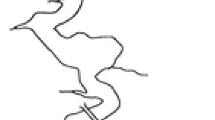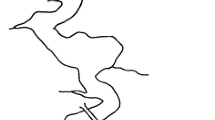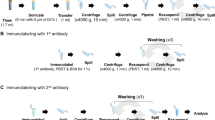Abstract
Diatoms (Bacillariophyceae) are important primary producers in a wide range of hydro-terrestrial habitats in polar regions that are characterized by many extreme environmental conditions. Nevertheless, how they survive periods of drought and/or freeze remains unknown. A general strategy of microorganisms to overcome adverse conditions is dormancy, but morphologically distinct diatom resting stages are rare. This study aimed to evaluate the annual cycle of freshwater diatoms in the High Arctic (Central Spitsbergen) and provide an insight into their physiological cell status variability. The diversity and viability of diatom cells were studied in samples collected five times at four study sites, tracing the key events for survival (summer vegetative season, autumn dry-freezing, winter freezing, spring melting, summer vegetative season [again]). For viability evaluation, a multiparameter fluorescent staining was used in combination with light microscopy and allowed to reveal the physiological status at a single-cell level. The proportions of the cell categories were seasonally and locality dependent. The results suggested that a significant portion of vegetative cells survive winter and provide an inoculum for the following vegetative season. The ice thickness significantly influenced spring survival. The thicker the ice layer was, the more dead cells and fewer other stages were observed. The influence of the average week max–min temperature differences in autumn and winter was not proven.








Similar content being viewed by others
References
Kim GH, Klochkova TA, Kang SH (2008) Notes on freshwater and terrestrial algae from Ny-Ålesund, Svalbard (high Arctic Sea area). J. Environ. Biol. 29:485–491
Pinseel E, Van de Vijver B, Kavan J et al (2017) Diversity, ecology and community structure of the freshwater littoral diatom flora from Petuniabukta (Spitsbergen). Polar Biol. 40:533–551. https://doi.org/10.1007/s00300-016-1976-0
Douglas MSV, Smol JP (1995) Periphytic diatom assemblages from High Arctic ponds. J. Phycol. 31:60–69. https://doi.org/10.1111/j.0022-3646.1995.00060.x
Vincent WF, Hobbie JE, Laybourn-Parry J (2008) Introduction to the limnology of high-latitude lake and river ecosystems. In: Vincent WF, Laybourn-Parry J (eds) Polar Lakes and Rivers. Oxford University Press, New York, pp 1–23
Lizotte MP (2008) Phytoplankton and primary production. In: Vincent WF, Laybourn-Parry J (eds) Polar Lakes and Rivers. Oxford University Press, New York, pp 157–178
Mellor CJ (2012) Arctic water source dynamics, stream habitat and biodiversity in a changing climate: a field-based investigation in Swedish Lapland. University of Birmingham
Karlsson JOM, Toner M (1996) Long-term storage of tissues by cryopreservation: critical issues. Biomaterials 17:243–256. https://doi.org/10.1016/0142-9612(96)85562-1
Meryman HT (1974) Freezing injury and its prevention in living cells. Annu. Rev. Biophys. Bioeng. 3:341–363. https://doi.org/10.1146/annurev.bb.03.060174.002013
Humlum O, Instanes A, Sollid JL (2003) Permafrost in Svalbard: a review of research history, climatic background and engineering challenges. Polar Res. 22:191–215. https://doi.org/10.3402/polar.v22i2.6455
Cooper EJ (2014) Warmer shorter winters disrupt Arctic terrestrial ecosystems. Annu. Rev. Ecol. Evol. Syst. 45:271–295. https://doi.org/10.1146/annurev-ecolsys-120213-091620
Serreze MC, Walsh JE, Chapin FS et al (2000) Observational evidence of recent change in the northern high-latitude environment. Clim. Chang. 46:159–207. https://doi.org/10.1023/A:1005504031923
Krembs C, Eicken H, Junge K, Deming JW (2002) High concentrations of exopolymeric substances in Arctic winter sea ice: implications for the polar ocean carbon cycle and cryoprotection of diatoms. Deep Sea Res. Part I Oceanogr. Res. Pap. 49:2163–2181. https://doi.org/10.1016/S0967-0637(02)00122-X
Bayer-Giraldi M, Weikusat I, Besir H, Dieckmann G (2011) Characterization of an antifreeze protein from the polar diatom Fragilariopsis cylindrus and its relevance in sea ice. Cryobiology 63:210–219. https://doi.org/10.1016/j.cryobiol.2011.08.006
Raymond JA, Fritsen CH (2001) Semipurification and ice recrystallization inhibition activity of ice-active substances associated with Antarctic photosynthetic organisms. Cryobiology 43:63–70. https://doi.org/10.1006/cryo.2001.2341
Gwak IG, Sic Jung W, Kim HJ et al (2010) Antifreeze protein in Antarctic marine diatom, Chaetoceros neogracile. Mar. Biotechnol. 12:630–639. https://doi.org/10.1007/s10126-009-9250-x
Raymond JA, Morgan-Kiss R (2013) Separate origins of ice-binding proteins in Antarctic Chlamydomonas species. PLoS One 8:6–11. https://doi.org/10.1371/journal.pone.0059186
Phadtare S (2004) Recent developments in bacterial cold-shock response. Curr. Issues Mol. Biol. 6:125–136. https://doi.org/10.21775/cimb.006.125
Liu X, Wang Y, Gao H, Xu X (2011) Identification and characterization of genes encoding two novel LEA proteins in Antarctic and temperate strains of Chlorella vulgaris. Gene 482:51–58. https://doi.org/10.1016/j.gene.2011.05.006
Greenway H, Setter TL (1979) Accumulation of proline and sucrose during the first hours after transfer of Chlorella emersonii to high NaCl. Aust. J. Plant Physiol. 6:69–79. https://doi.org/10.1071/PP9790069
Blunden G, Smith BE, Irons MW, Yang MH, Roch OG, Patel AV (1992) Betaines and tertiary sulphonium compounds from 62 species of marine algae. Biochem. Syst. Ecol. 20:373–388. https://doi.org/10.1016/0305-1978(92)90050-N
Keller MD, Bellows WK, Guillard RRL (1989) Dimethyl sulfide production in marine phytoplankton. In: Cooper WJ (ed) Saltzman, E. American Chemical Society, Biogenic Sulfur in the Environment, pp 167–182
Henderson RJ, Hegseth EN, Park MT (1998) Seasonal variation in lipid and fatty acid composition of ice algae from the Barents Sea. Polar Biol. 20:48–55. https://doi.org/10.1007/s003000050275
Teoh M-L, Chu W-L, Marchant H, Phang S-M (2004) Influence of culture temperature on the growth, biochemical composition and fatty acid profiles of six Antarctic microalgae. J. Appl. Phycol. 16:421–430. https://doi.org/10.1007/s10811-004-5502-3
Kuwata A, Hama T, Takahashi M (1993) Ecophysiological characterization of two life forms, resting spores and resting cells, of a marine planktonic diatom, Chaetoceros pseudocurvisetus, formed under nutrient depletion. Mar. Ecol. Prog. Ser. 102:245–256. https://doi.org/10.3354/meps102245
Jewson DH, Granin NG, Zhdanov AA, Gorbunova LA, Bondarenko NA, Gnatovsky RY (2008) Resting stages and ecology of the planktonic diatom Aulacoseira skvortzowii in Lake Baikal. Limnol. Oceanogr. 53:1125–1136. https://doi.org/10.4319/lo.2008.53.3.1125
Lund JWG (1954) The seasonal cycle of the plankton diatom, Melosira italica (Ehr.) Kutz. subsp. subarctica O. Müll. J. Ecol. 42:151–179. https://doi.org/10.2307/2256984
Anderson OR (1975) Ultrastructure and cytochemistry of resting cell formation in Amphora coffeaeformis (Bacillariophyceae). J. Phycol. 11:272–281. https://doi.org/10.1111/j.1529-8817.1975.tb02778.x
Sicko-Goad L, Stoermer EF, Fahnenstiel G (1986) Rejuvenation of Melosira granulata (Bacillariophyceae) resting cells from the anoxic sediments of Douglas Lake, Michigan. I. Light microscopy and 14 C uptake. J. Phycol. 22:22–28. https://doi.org/10.1111/j.1529-8817.1986.tb02510.x
Round FE, Crawford RM, Mann DG (1990) Diatoms: biology and morphology of the genera. Cambridge University Press, Cambridge
McQuoid MR, Hobson LA (1996) Diatom resting stages. J. Phycol. 32:889–902. https://doi.org/10.1111/j.0022-3646.1996.00889.x
Souffreau C, Vanormelingen P, Sabbe K, Vyverman W (2013) Tolerance of resting cells of freshwater and terrestrial benthic diatoms to experimental desiccation and freezing is habitat-dependent. Phycologia 52:14–24. https://doi.org/10.2216/12-087.1
McQuoid MR, Hobson LA (1995) Importance of resting stages in diatom seasonal succession. J. Phycol. 31:44–50. https://doi.org/10.1111/j.0022-3646.1995.00044.x
Kuwata A, Takahashi M (1999) Survival and recovery of resting spores and resting cells of the marine planktonic diatom Chaetoceros pseudocurvisetus under fluctuating nitrate conditions. Mar. Biol. 134:471–478. https://doi.org/10.1007/s002270050563
Edlund MB, Stoermer EF, Taylor CM (1996) Aulacoseira skvortzowii sp. nov. (Bacillariophyta), a poorly understood diatom from Lake Baikal, Russia 1. J. Phycol. 32:165–175. https://doi.org/10.1111/j.0022-3646.1996.00165.x
Tashyreva D, Elster J (2016) Annual cycles of two cyanobacterial mat communities in hydro-terrestrial habitats of the High Arctic. Microb. Ecol. 71:887–900. https://doi.org/10.1007/s00248-016-0732-x
Pichrtová M, Hájek T, Elster J (2016) Annual development of mat-forming conjugating green algae Zygnema spp. in hydro-terrestrial habitats in the Arctic. Polar Biol. 39:1653–1662. https://doi.org/10.1007/s00300-016-1889-y
Tashyreva D, Elster J, Billi D (2013) A novel staining protocol for multiparameter assessment of cell heterogeneity in Phormidium populations (cyanobacteria) employing fluorescent dyes. PLoS One 8:1–12. https://doi.org/10.1371/journal.pone.0055283
Norwegian Polar Institute Map data Svalbard 1:1 000 000. https://data.npolar.no. Accessed 10 Oct 2019
Major H, Nagy J (1972) Geology of the Adventdalen map area
Piepjohn K, Stange R, Jochmann M, Hübner C (2012) The geology of Longyearbyen. Longyearbyen feltbiologiske forening
Peel MC, Finlayson BL, McMahon TA (2007) Updated world map of the Köppen-Geiger climate classification. Hydrol. Earth Syst. Sci. 4:439–473. https://doi.org/10.5194/hess-11-1633-2007
Førland EJ, Hanssen-Bauer I, Nordli PØ (1997) Climate statistics & longterm series of temperature and precipitation at Svalbard and Jan Mayen. DNMI Klima 21:73
UNIS weather stations Adventdalen (hour dataset) 2016–now. https://www.unis.no/resources/weather-stations/. Accessed 10 Dec 2019
Oksanen J, Blanchet GF, Friendly M, et al. CRAN - Package vegan. In: Vegan Community Ecol. Packag. R Packag. version 2.5–6. https://cran.r-project.org/web/packages/vegan/index.html. Accessed 9 Sep 2019
Davey MC (1989) The effects of freezing and desiccation on photosynthesis and survival of terrestrial Antarctic algae and cyanobacteria. Polar Biol. 10:29–36. https://doi.org/10.1007/BF00238287
Elster J, Benson EE (2004) Life in the polar terrestrial environment with a focus on algae and cyanobacteria. In: Lane N, Benson EE (eds) Fuller B. Taylor and Francis, Life in the Frozen State, pp 111–150
Morgner E, Elberling B, Strebel D, Cooper EJ (2010) The importance of winter in annual ecosystem respiration in the High Arctic: effects of snow depth in two vegetation types. Polar Res. 29:58–74. https://doi.org/10.1111/j.1751-8369.2010.00151.x
Gouttevin I, Menegoz M, Dominé F, Krinner G, Koven C, Ciais P, Tarnocai C, Boike J (2012) How the insulating properties of snow affect soil carbon distribution in the continental pan-Arctic area. J. Geophys. Res. Biogeosci. 117:1–11. https://doi.org/10.1029/2011JG001916
Coulson SJ, Leinaas HP, Ims RA, Søvik G (2000) Experimental manipulation of the winter surface ice layer: the effects on a High Arctic soil microarthropod community. Ecography 23:299–306. https://doi.org/10.1111/j.1600-0587.2000.tb00285.x
Putkonen J, Roe G (2003) Rain-on-snow events impact soil temperatures and affect ungulate survival. Geophys. Res. Lett. 30:1–4. https://doi.org/10.1029/2002GL016326
Rennert KJ, Roe G, Putkonen J, Bitz CM (2009) Soil thermal and ecological impacts of rain on snow events in the circumpolar arctic. J. Clim. 22:2302–2315. https://doi.org/10.1175/2008JCLI2117.1
Tashyreva D, Elster J (2012) Production of dormant stages and stress resistance of polar cyanobacteria. In: Hanslmeier A (ed) Life on Earth and Other Planetary Bodies. Springer Science, Dordrecht, pp 367–386
Pichrtová M, Kulichová J, Holzinger A (2014) Nitrogen limitation and slow drying induce desiccation tolerance in conjugating green algae (Zygnematophyceae, Streptophyta) from polar habitats. PLoS One 9:e113137. https://doi.org/10.1371/journal.pone.0113137
Pichrtová M, Hájek T, Elster J (2014) Osmotic stress and recovery in field populations of Zygnema sp. (Zygnematophyceae, Streptophyta) on Svalbard (High Arctic) subjected to natural desiccation. FEMS Microbiol. Ecol. 89:270–280. https://doi.org/10.1111/1574-6941.12288
Hawes I (1990) Effects of freezing and thawing on a species of Zygnema (Chlorophyta) from the Antarctic. Phycologia 29:326–331. https://doi.org/10.2216/i0031-8884-29-3-326.1
Davey MC (1991) Effects of physical factors on the survival and growth of Antarctic terrestrial algae. Br. Phycol. J. 26:315–325. https://doi.org/10.1080/00071619100650281
Remias D, Karsten U, Lütz C, Leya T (2010) Physiological and morphological processes in the Alpine snow alga Chloromonas nivalis (Chlorophyceae) during cyst formation. Protoplasma 243:73–86. https://doi.org/10.1007/s00709-010-0123-y
Remias D (2012) Cell structure and physiology of alpine snow and ice algae. In: Lütz C (ed) Plants in Alpine Regions. Springer-Verlag, Vienna, pp 175–185
Jewson DH, Granin NG (2015) Cyclical size change and population dynamics of a planktonic diatom, Aulacoseira baicalensis, in Lake Baikal. Eur. J. Phycol. 50:1–19. https://doi.org/10.1080/09670262.2014.979450
Vehmaa A, Salonen K (2009) Development of phytoplankton in Lake Pääjärvi (Finland) during under-ice convective mixing period. Aquat. Ecol. 43:693–705. https://doi.org/10.1007/s10452-009-9273-4
Bondarenko NA, Timoshkin OA, Röpstorf P, Melnik NG (2006) The under-ice and bottom periods in the life cycle of Aulacoseira baicalensis (K. Meyer) Simonsen, a principal Lake Baikal alga. Hydrobiologia 568:107–109. https://doi.org/10.1007/s10750-006-0325-7
Jewson DH, Granin NG, Zhdarnov AA, Gorbunova LA, Gnatovsky RY (2010) Vertical mixing, size change and resting stage formation of the planktonic diatom Aulacoseira baicalensis. Eur. J. Phycol. 45:354–364. https://doi.org/10.1080/09670262.2010.492915
Elster J, Degma P, Kováčik L, Valentová L, Šramková K, Batista Pereira A (2008) Freezing and desiccation injury resistance in the filamentous green alga Klebsormidium from the Antarctic, Arctic and Slovakia. Biologia 63:843–851. https://doi.org/10.2478/s11756-008-0111-2
Karsten U, Lütz C, Holzinger A (2010) Ecophysiological performance of the aeroterrestrial green alga Klebsormidium crenulatum (Klebsormidiophyceae, Streptophyta) isolated from an alpine soil crust with an emphasis on desiccation stress. J. Phycol. 46:1187–1197. https://doi.org/10.1111/j.1529-8817.2010.00921.x
Sheath RG, Vis ML, Hambrook JA, Cole KM (1996) Tundra stream macroalgae of North America: composition, distribution and physiological adaptations. Hydrobiologia 336:67–82. https://doi.org/10.1007/BF00010820
Sutherland JM, Herdman M, Stewart WDP (1979) Akinetes of the cyanobacterium Nostoc PCC 7524: macromolecular composition, structure and control of differentiation. J. Gen. Microbiol. 115:273–287. https://doi.org/10.1099/00221287-115-2-273
Šabacká M, Elster J (2006) Response of cyanobacteria and algae from Antarctic wetland habitats to freezing and desiccation stress. Polar Biol. 30:31–37. https://doi.org/10.1007/s00300-006-0156-z
Hawes I, Howard-Williams C, Vincent WF (1992) Desiccation and recovery of Antarctic cyanobacterial mats. Polar Biol. 12:587–594. https://doi.org/10.1007/BF00236981
Souffreau C, Vanormelingen P, Verleyen E, Sabbe K, Vyverman W (2010) Tolerance of benthic diatoms from temperate aquatic and terrestrial habitats to experimental desiccation and temperature stress. Phycologia 49:309–324. https://doi.org/10.2216/09-30.1
Hejduková E, Pinseel E, Vanormelingen P, Nedbalová L, Elster J, Vyverman W, Sabbe K (2019) Tolerance of pennate diatoms (Bacillariophyceae) to experimental freezing: comparison of polar and temperate strains. Phycologia 58:1–11. https://doi.org/10.1080/00318884.2019.1591835
Mock T, Valentin K (2004) Photosynthesis and cold acclimation: molecular evidence from a polar diatom. J. Phycol. 40:732–741. https://doi.org/10.1111/j.1529-8817.2004.03224.x
Olofsson M, Lamela T, Nilsson E, Bergé JP, del Pino V, Uronen P, Legrand C (2012) Seasonal variation of lipids and fatty acids of the microalgae Nannochloropsis oculata grown in outdoor large-scale photobioreactors. Energies 5:1577–1592. https://doi.org/10.3390/en5051577
Antoniades D, Douglas MSV (2002) Characterization of high arctic stream diatom assemblages from Cornwallis Island, Nunavut, Canada. Can. J. Bot. 80:50–58. https://doi.org/10.1139/b01-133
Pla-Rabés S, Hamilton PB, Ballesteros E, Gavrilo M, Friedlander AM, Sala E (2016) The structure and diversity of freshwater diatom assemblages from Franz Josef Land archipelago: a northern outpost for freshwater diatoms. PeerJ 2016:1–22. https://doi.org/10.7717/peerj.1705
Passy SI (2007) Diatom ecological guilds display distinct and predictable behavior along nutrient and disturbance gradients in running waters. Aquat. Bot. 86:171–178. https://doi.org/10.1016/j.aquabot.2006.09.018
Acknowledgments
The authors wish to thank the Czech Arctic Scientific Infrastructure of the University of South Bohemia, Josef Svoboda Station, Svalbard (CzechPolar2 Project LM2015078 supported by the Ministry of Education, Youth and Sports of the Czech Republic), and the institutional long-term research plan RVO67985939 of the Institute of Botany of the Czech Academy of Sciences. Eveline Pinseel and Bart Van de Vijver are acknowledged for identification of diatoms and Jana Duchoslavová for a statistical help. The authors wish to thank Paul Hamilton and three anonymous reviewers for their constructive comments on an earlier version of the manuscript.
Funding
The research was supported by the Grant Agency of Charles University (project no. 20217).
Author information
Authors and Affiliations
Corresponding author
Electronic Supplementary Material
ESM 1
(DOCX 92.0 mb)
Rights and permissions
About this article
Cite this article
Hejduková, E., Elster, J. & Nedbalová, L. Annual Cycle of Freshwater Diatoms in the High Arctic Revealed by Multiparameter Fluorescent Staining. Microb Ecol 80, 559–572 (2020). https://doi.org/10.1007/s00248-020-01521-w
Received:
Accepted:
Published:
Issue Date:
DOI: https://doi.org/10.1007/s00248-020-01521-w




